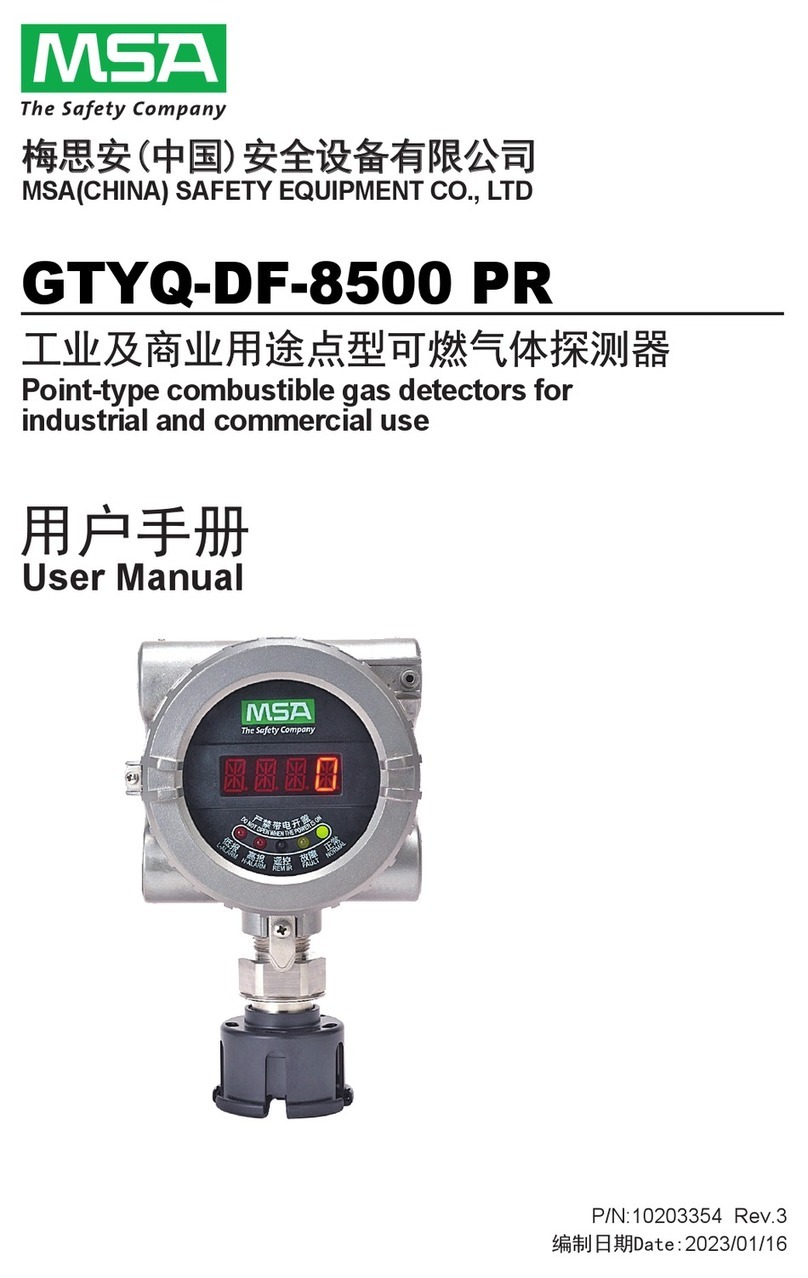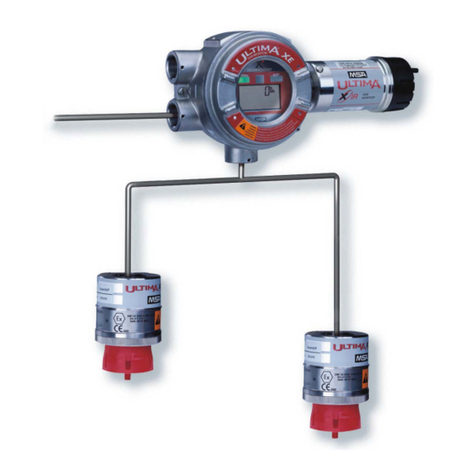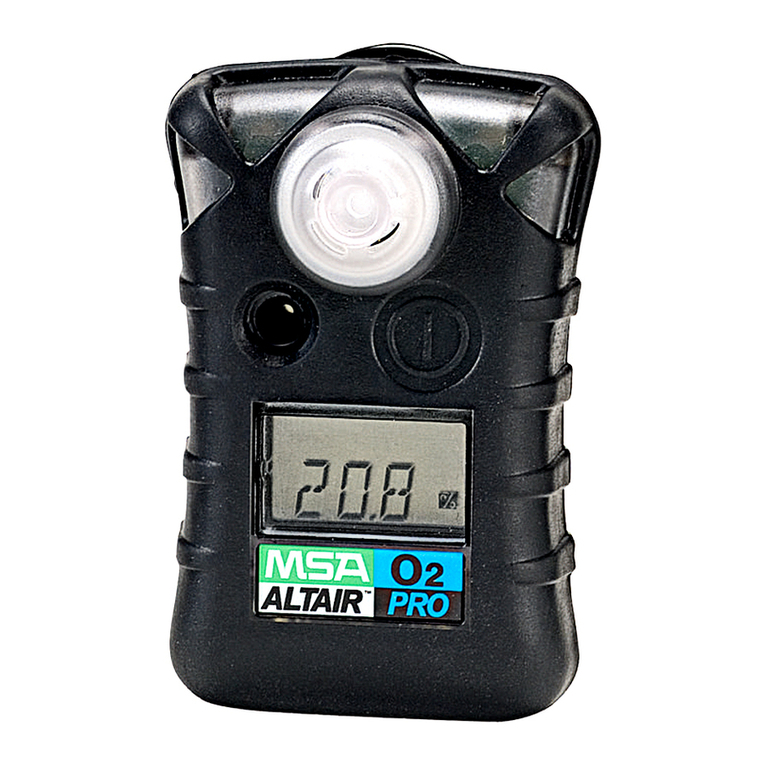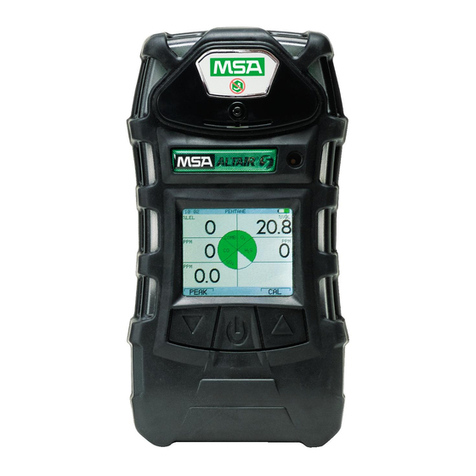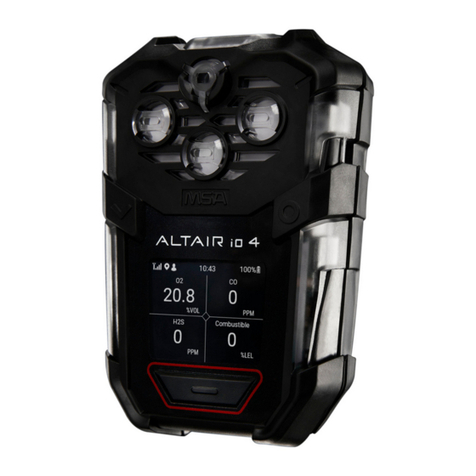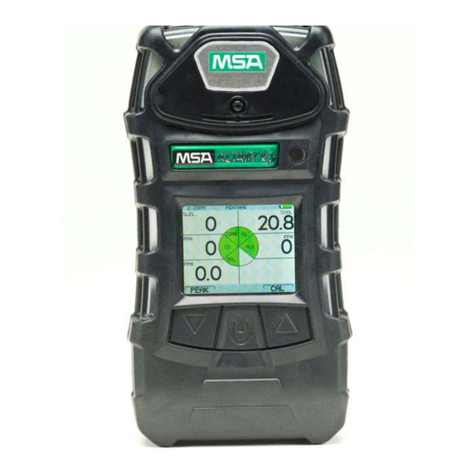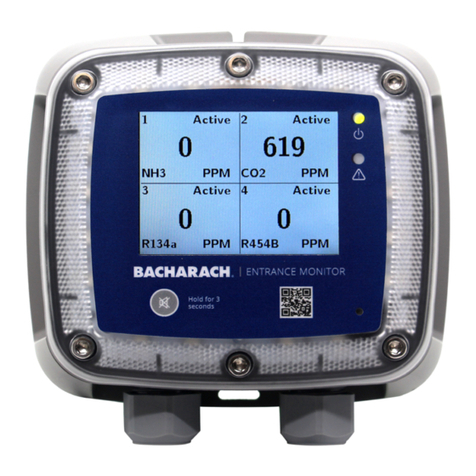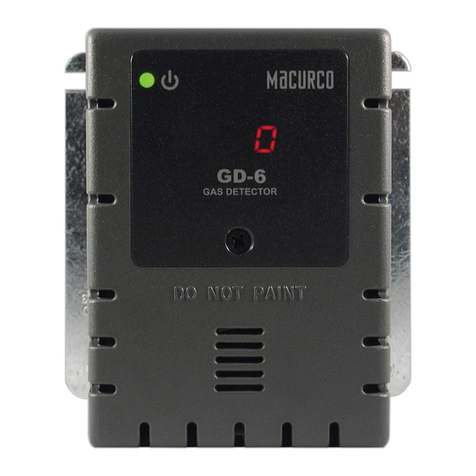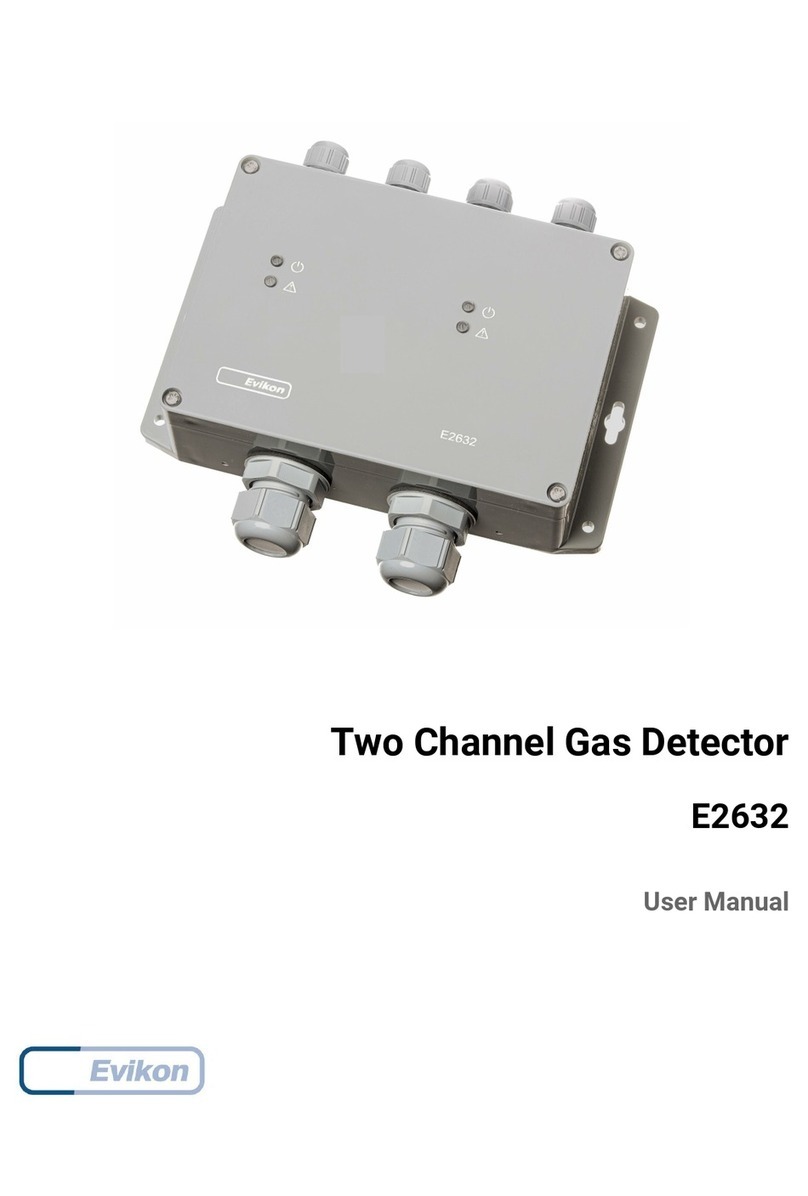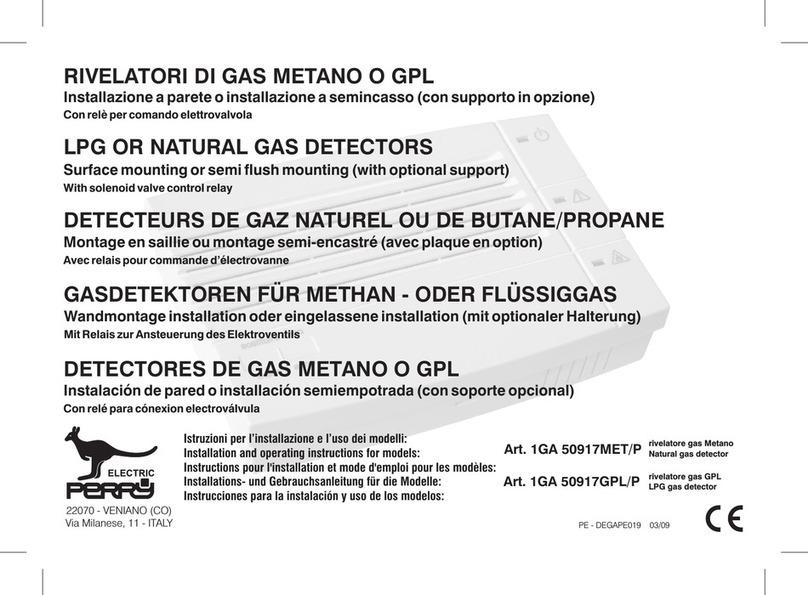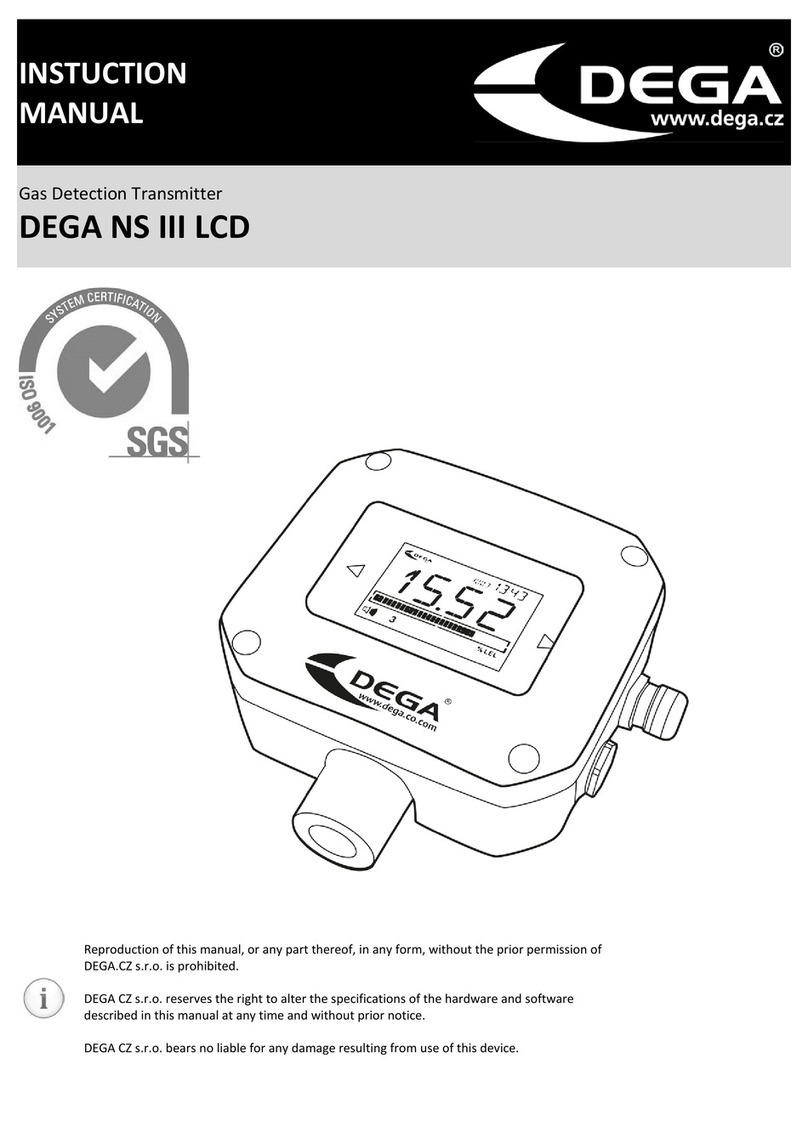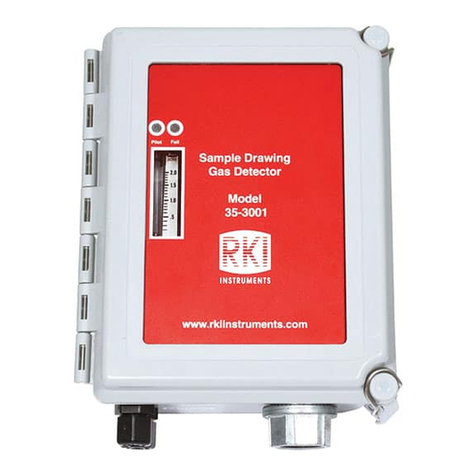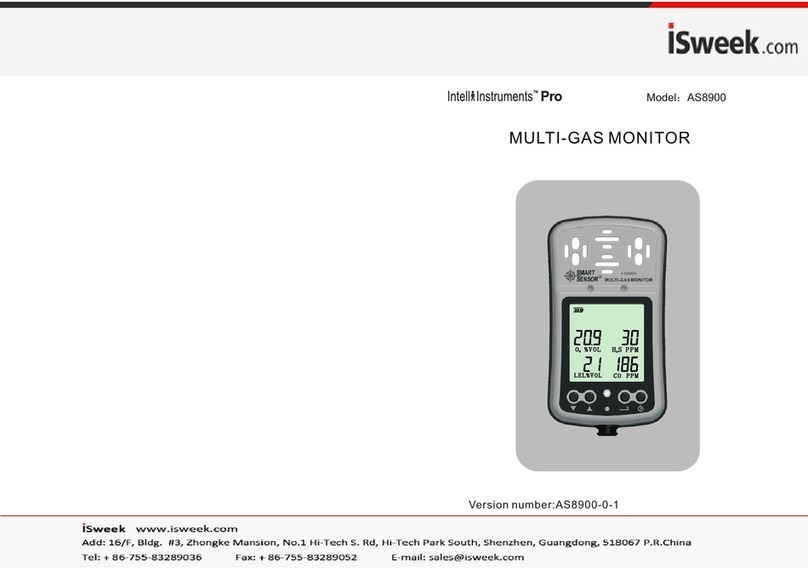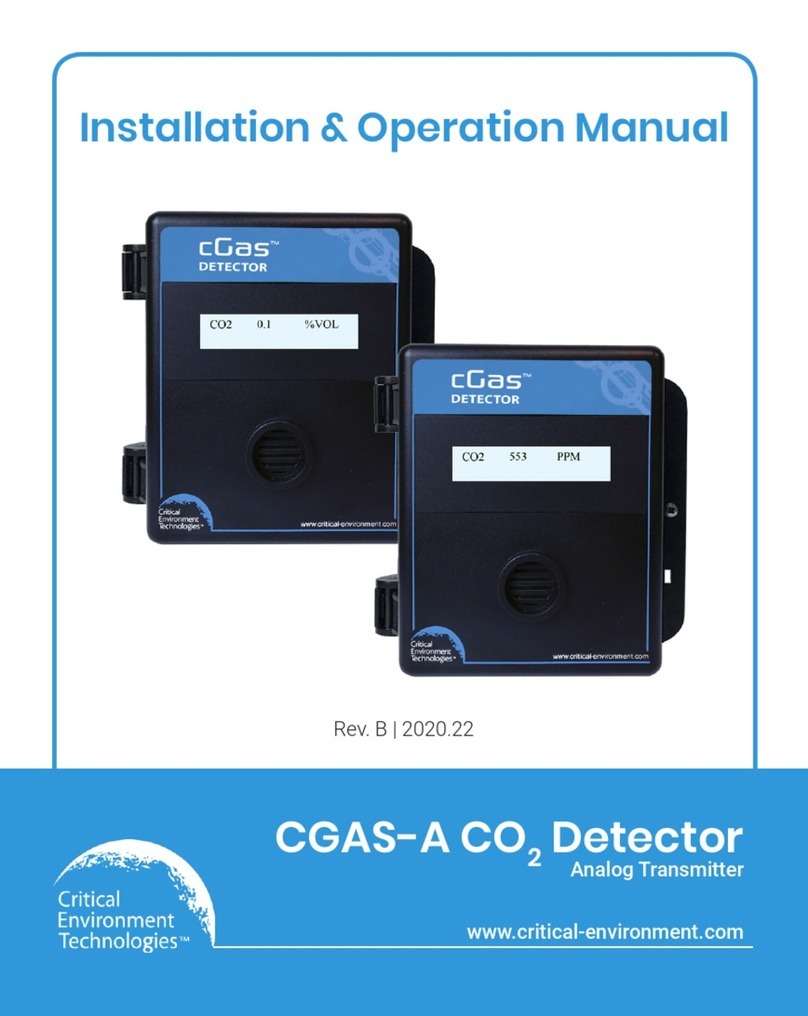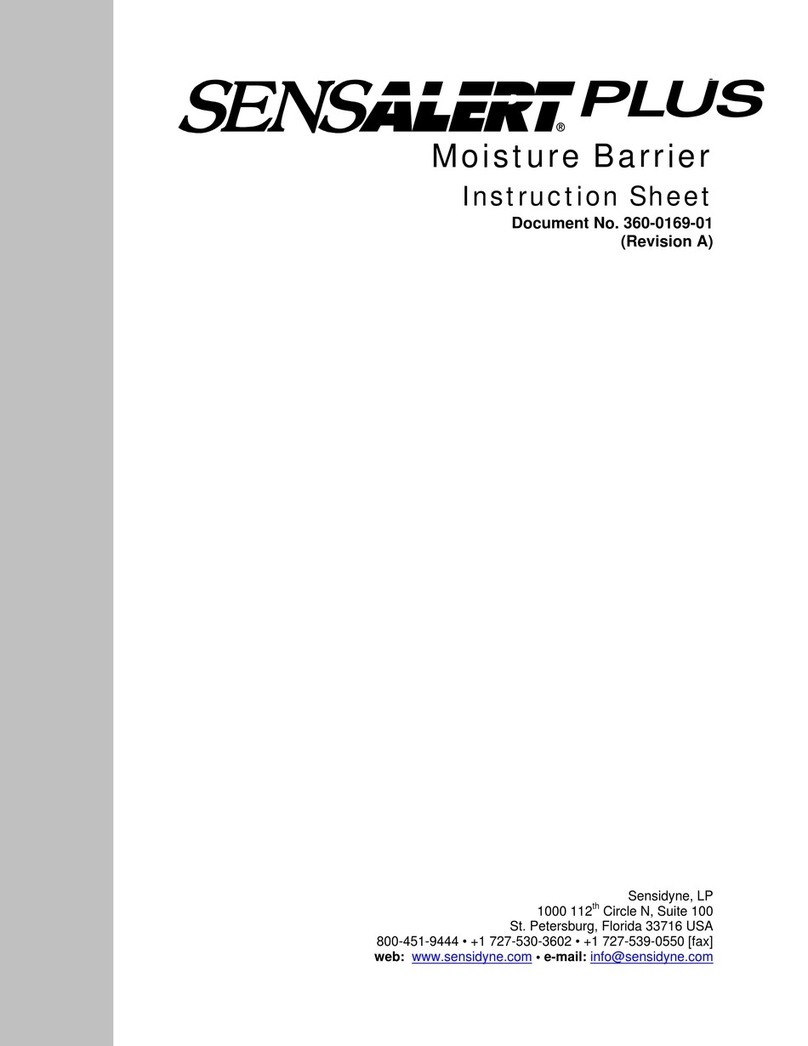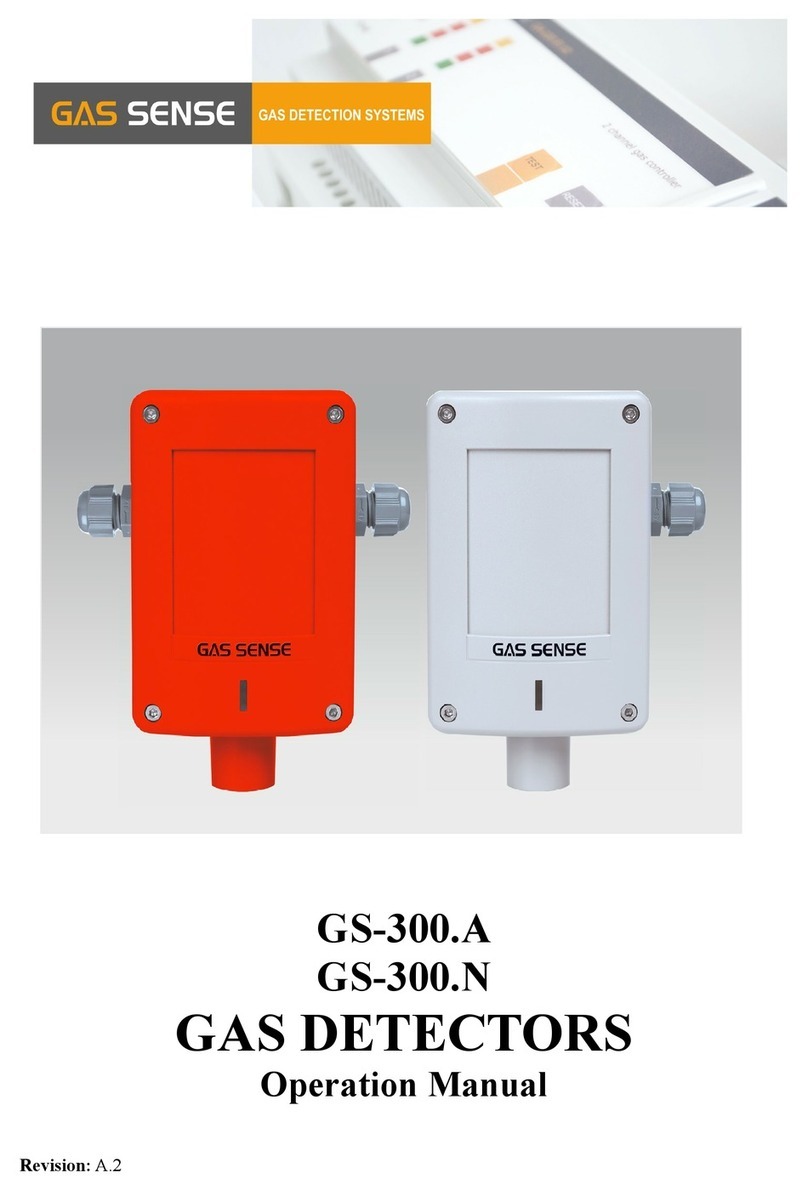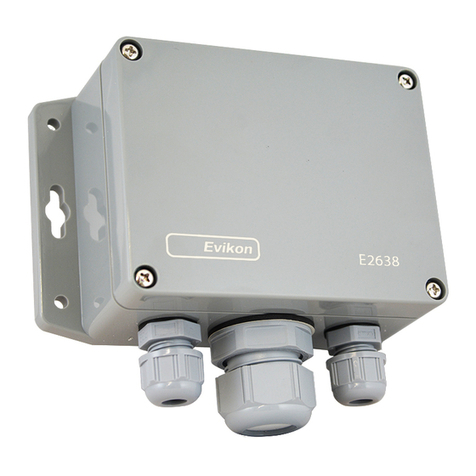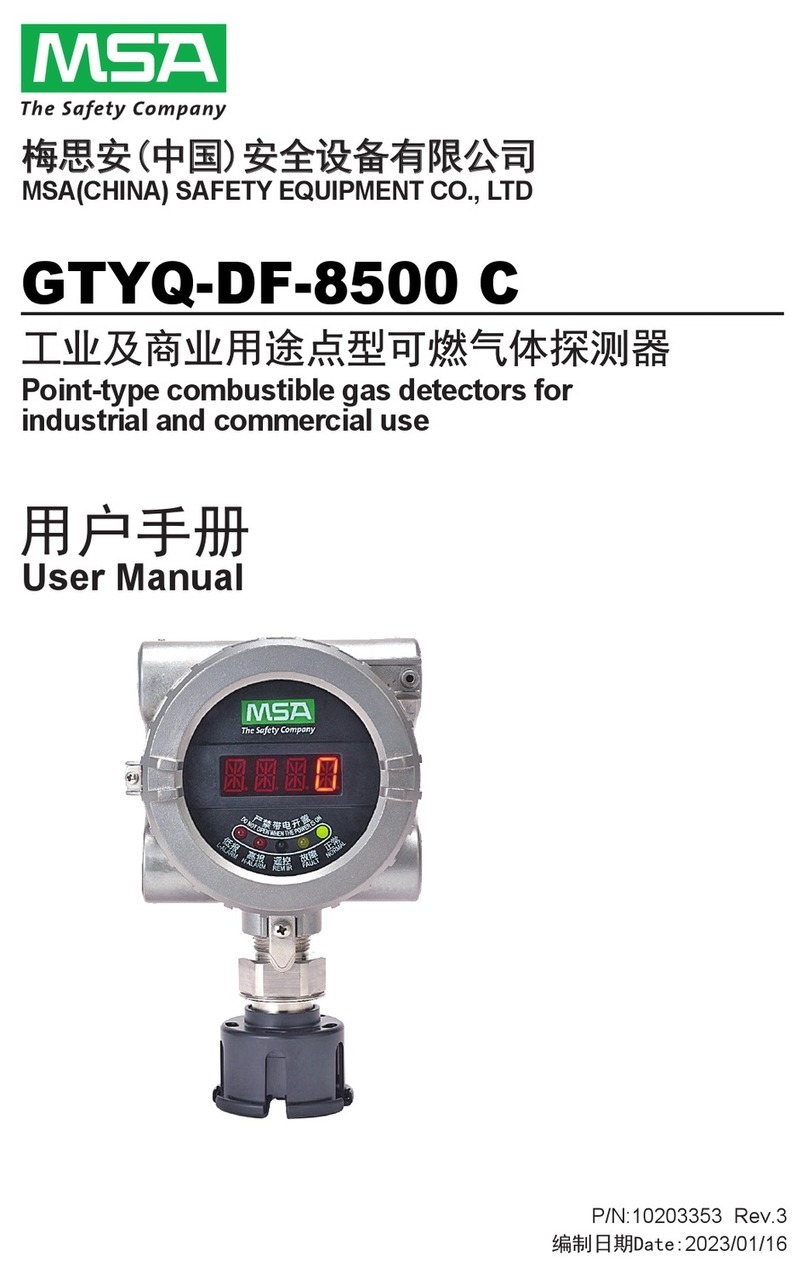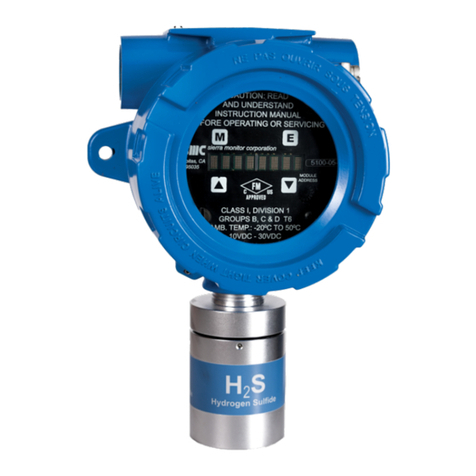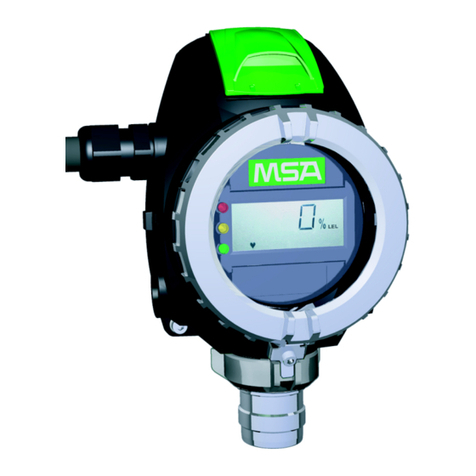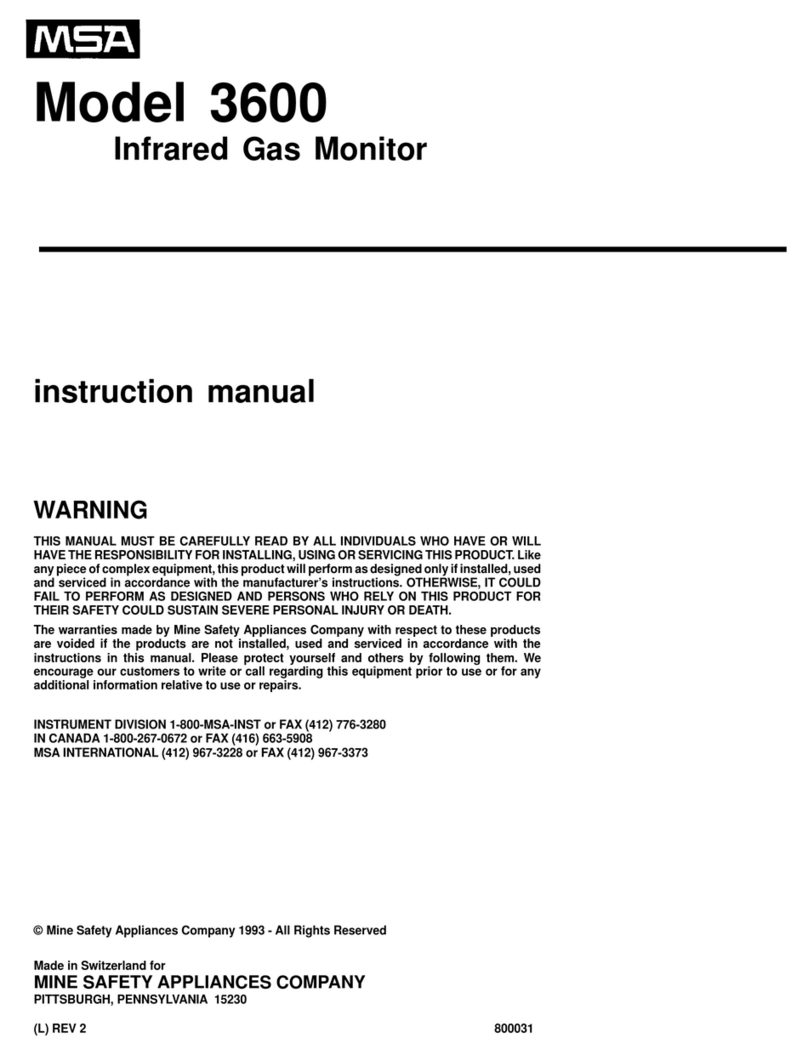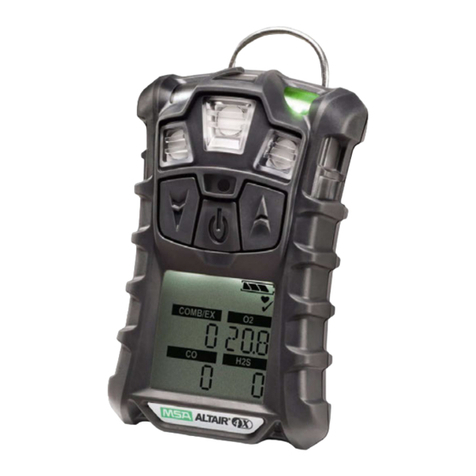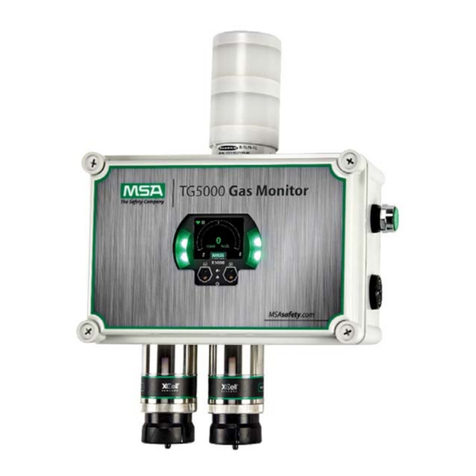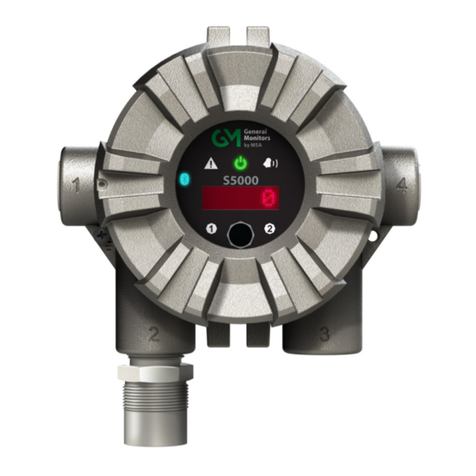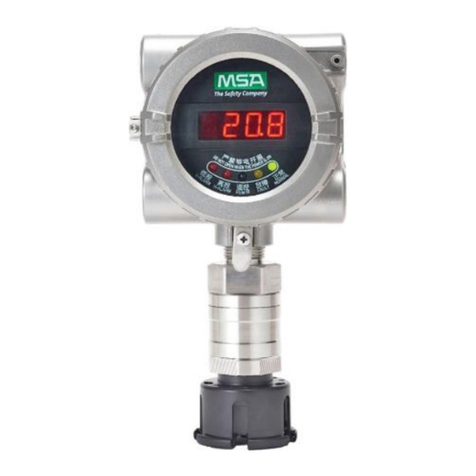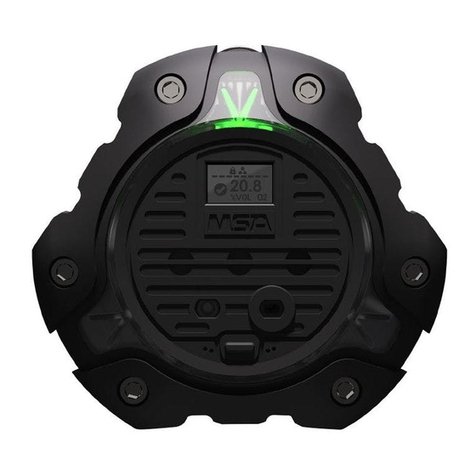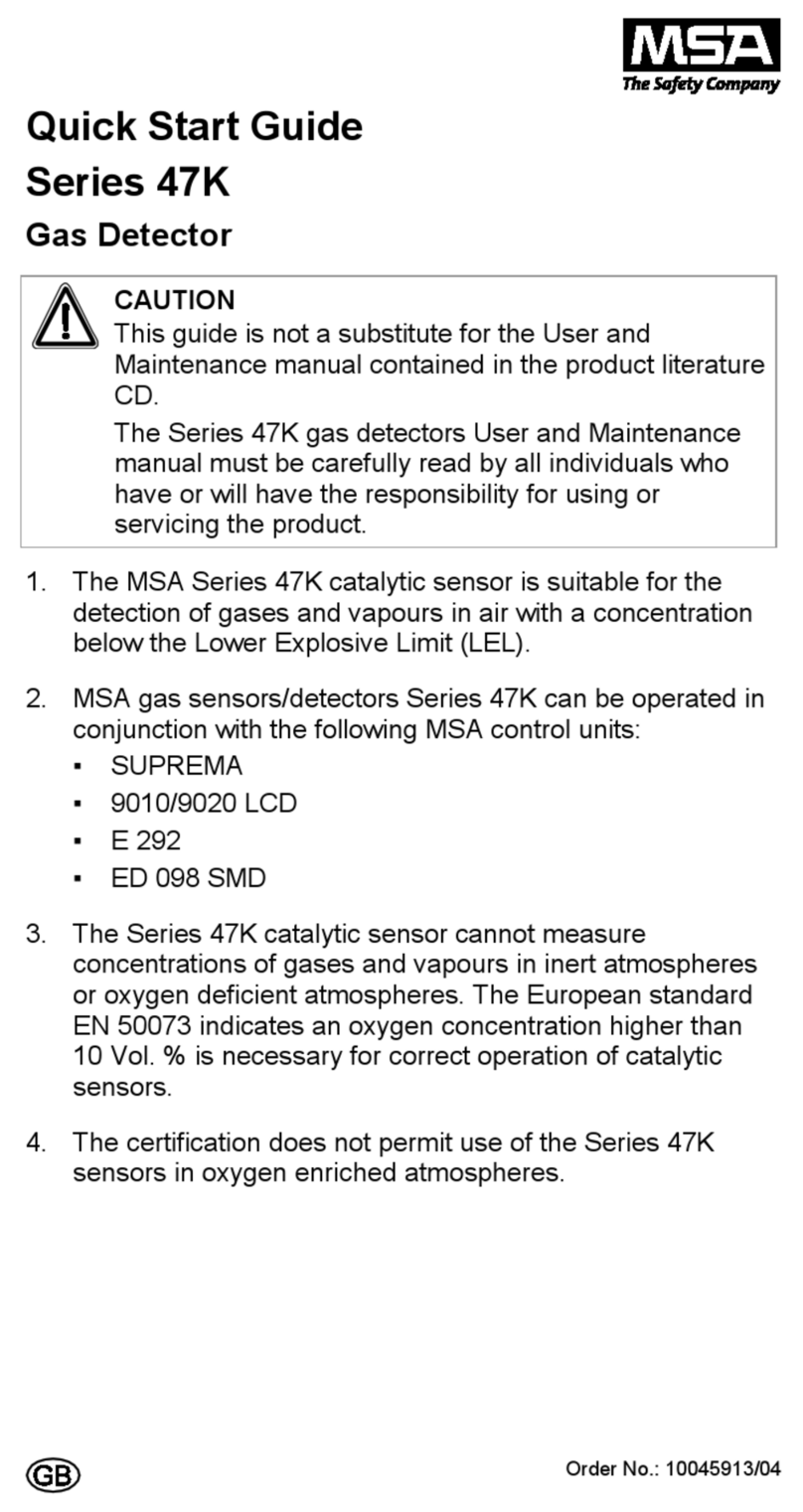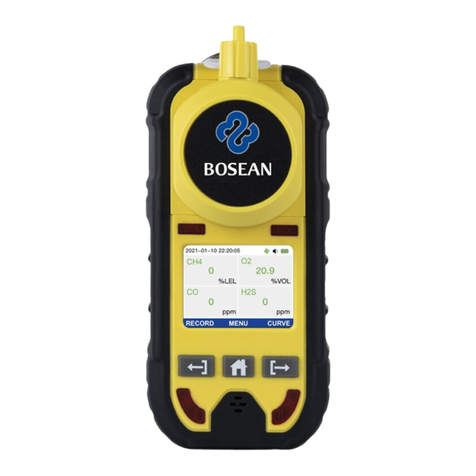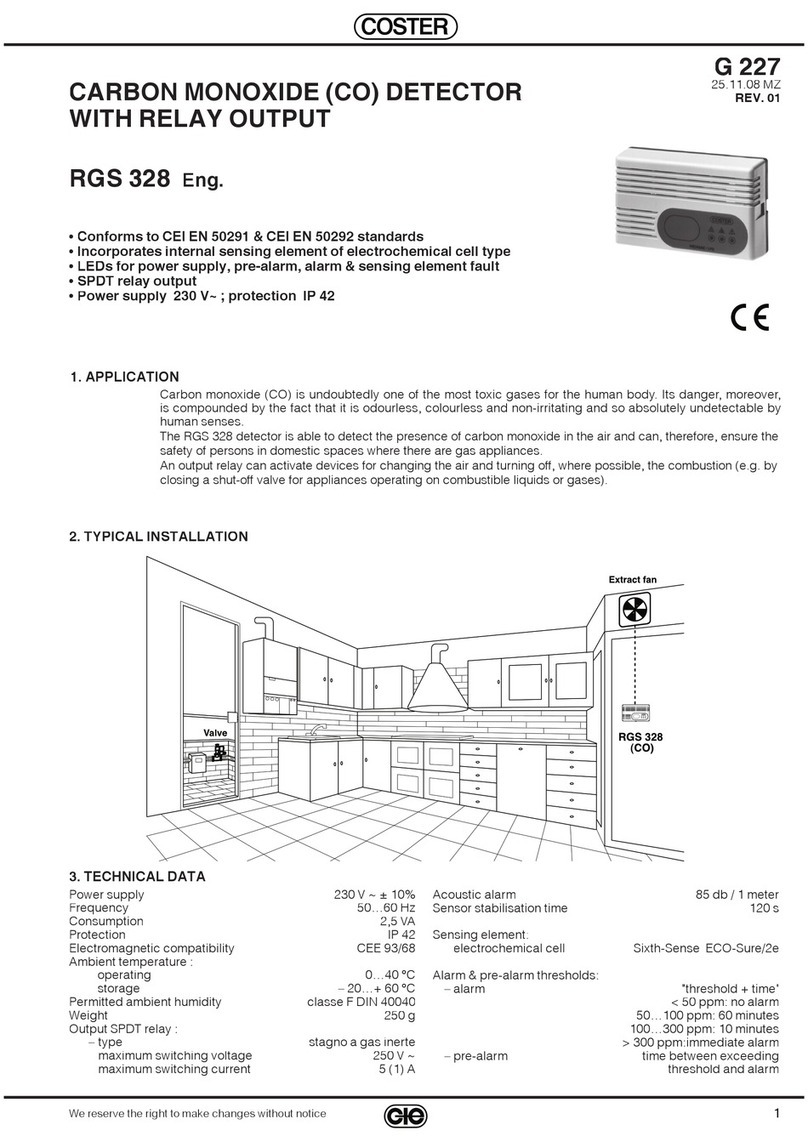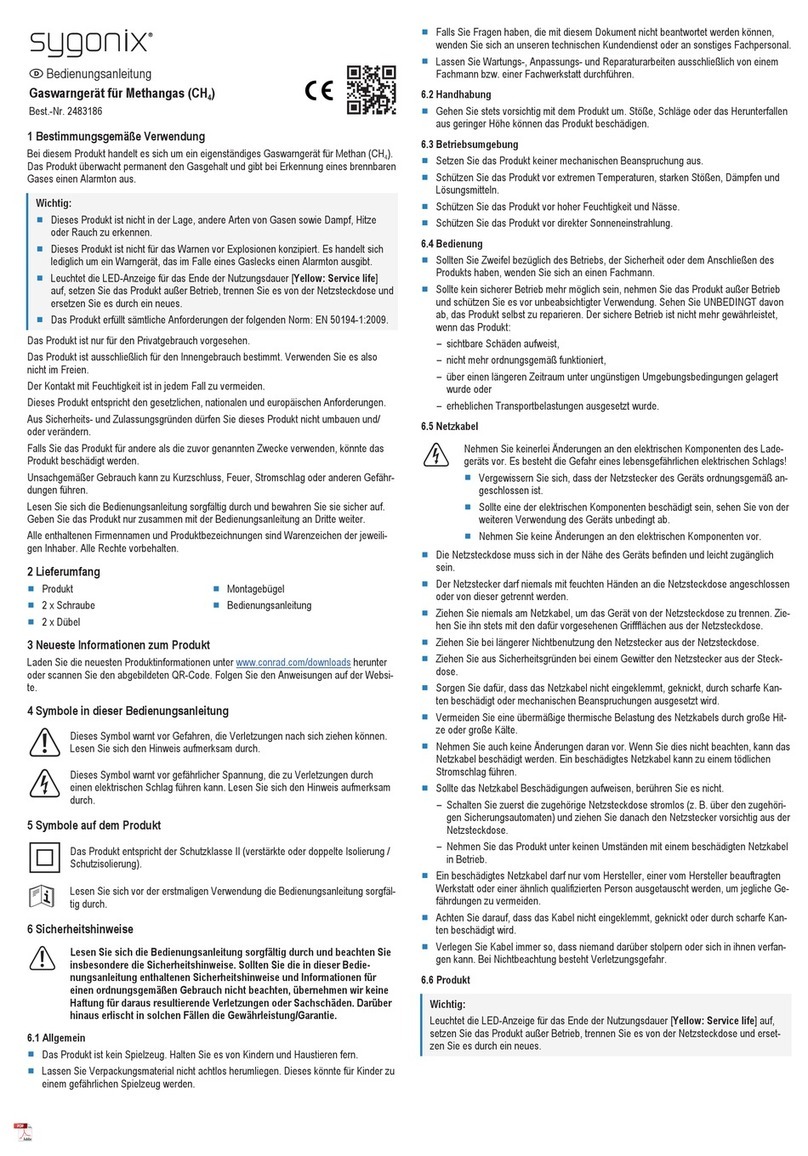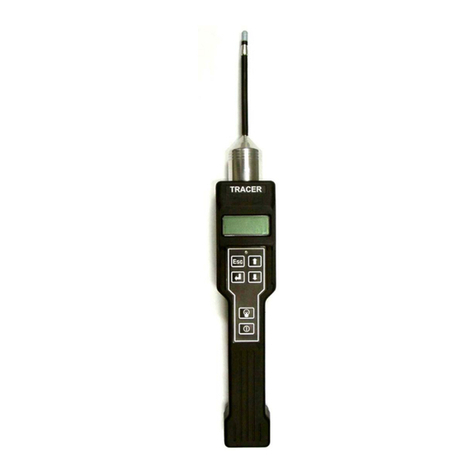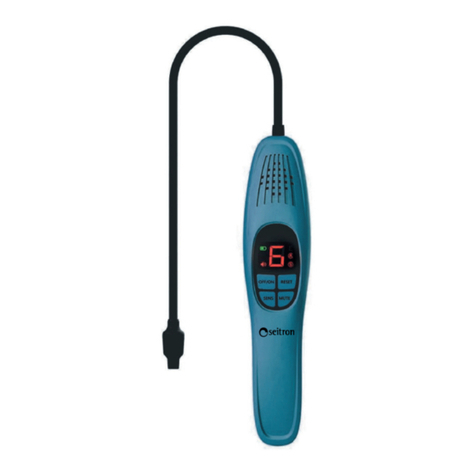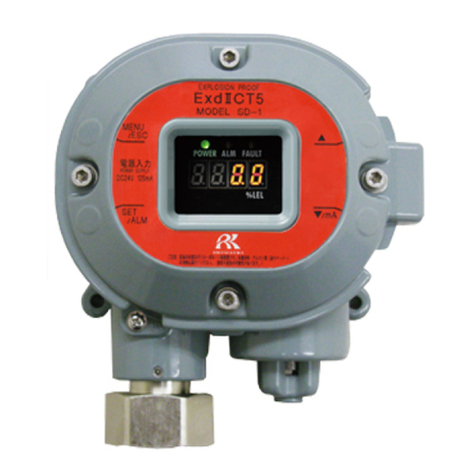
2Four-Head Gas Detector: MSA Orion
D.I. Recommended Practice Version 02 Issued February 2011
FILE: W:\NB\RP HMRU\Orion\Frame Ver 02\Orion.fm © Copyright State of NSW (Fire and Rescue NSW) 2011
The Orion must only be used by people trained in its operation.
The Orion has a simple, two button operation. It is powered by three AA alkaline
cells. It features an automatic datalogging facility. The Orion uses four sensors to
detect:
• oxygen (O2) percentage in the atmosphere
• carbon monoxide (CO), in parts per million
• hydrogen sulphide (H2S), in parts per million
•combustiblegasesandsomecombustiblevapours as a percentage of the Lower
Explosive Limit (LEL).
The Orion continuously monitors these four conditions. The instrument alarms
when any one condition reaches preset alarm levels. These levels are given in Table
6: Gas concentration alarms, on page 25.
In addition, the oxygen concentration shown by the Orion can be used as an
indicator of other contaminants. See Section 3.4.1: ‘Operational hints’ on page 24
for more information.
Use the Orion when your dynamic risk assessment indicates one of the above
hazardous atmospheres might exist and that atmospheric monitoring is a suitable
control measure. Atmospheric monitoring is mandatory in confined spaces.This
monitoring helps determine:
• the hot zone boundary
•safeOHSlimitsfortheuseofrespiratory and personal protective equipment for
these hazards
• render safe.
Consider adequate fire protection.
If a toxic gas alarms sounds, notify the Incident Controller (IC) and continue
monitoring.
When operating in an ambient temperature above 40 oC and your 10% LEL alarm
sounds, stop your activity and reassess your dynamic risk assessment and incident
action plan. If required, exit and/or seek specialist advice from HMRU on the nature
of the contaminant.
When operating at any ambient temperature in an environment which may contain
carbon disulphide, exit the area if the 10% LEL alarm sounds.
See A.8: ‘Temperature class’, on page 40, for temperature classes of gases.
1.3 Limitations
The Orion indicates the presence of, but does not identify, combustible gases.
The Orion does not measure the toxicity of combustible gases.
Response time is 30 to 45 seconds.
